
Telmatoblechnum serrulatum
(Swamp Fern)
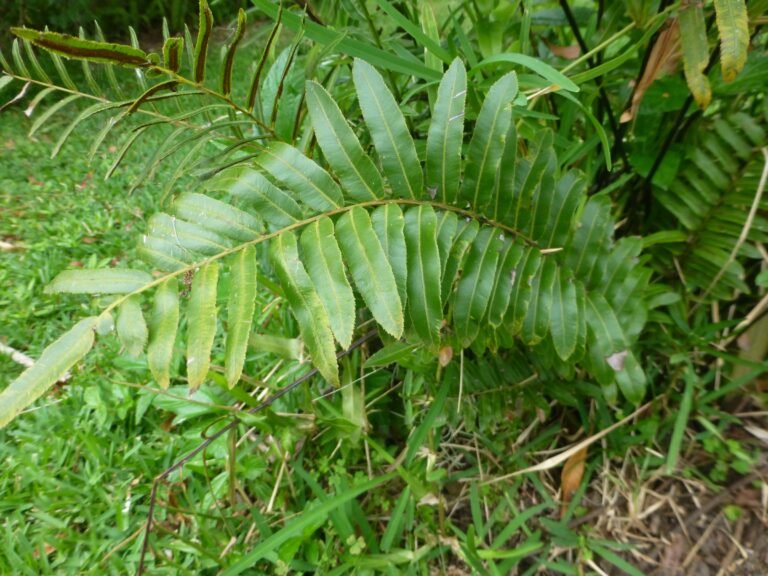
Common Names, Latin Name, and Family
Common names include toothed midsorus fern, and marsh fern.
The Latin name is Telmatoblechnum serrulatum.
Swamp fern is found in the Blechnaceae, or chain fern, family.
It used to be in the genus Blechnum and was formerly called Blechnum serrulatum and in some literature, and websites, it is still called that.
Form
Swamp fern is a native, perennial, fern that spreads by underground runners.
Stems appear along these runners and can come up anywhere along them so this fern tends to travel.
This fern does not form clumps but may have the appearance when many individuals come up next to each other.
Leaves
Fronds (leaf): The fronds are usually 3 feet in height but have the capability to reach up to twice that height at 6 feet. They have very rigid stems and are usually erect.
Petiole (leaf stalk): Petiole length ranges from 4 to 24 inches.
Rachis (leaf stem): The rachis is not winged and is thick, round, grayish green and lacks hairs.
Blade (leaf blade): The leaf blades are elliptic to lanceolate in their general shape. They are 10 to 24 inches long and 2 to 12 inches wide.
Pinnae (leaflets): The leaflets are alternate. Some may be stalked while others are not. Narrowly lanceolate in shape with some curving. The individual pinnae are 1 to 6 inches long and a little over 3/4 of an inch wide. They have toothed margins.
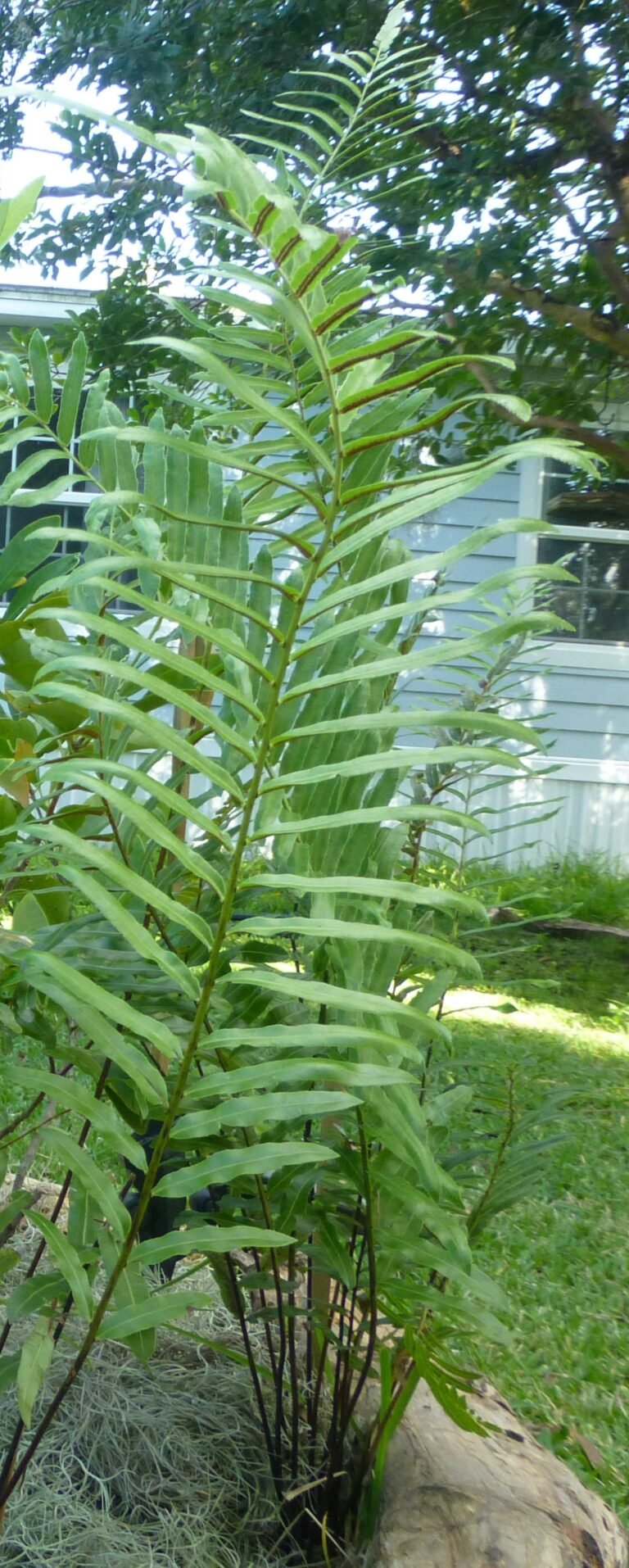
Spores
The sori is the structure on the leaf that contains the spores.
On the swamp fern the sori are located along each side of the main leaf vein in a thick line.
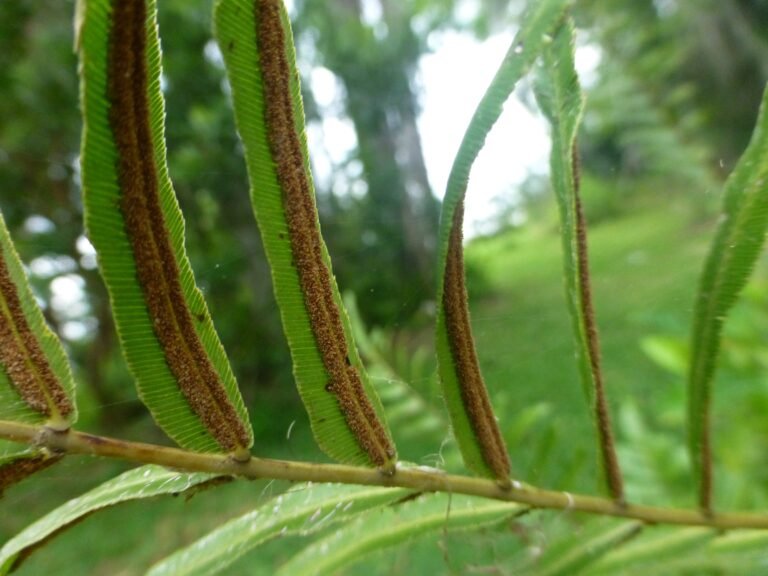
Habitat
Swamp fern is found naturally occurring in moist sites such as swamps, marshes, moist hammocks and moist pinelands.
It is mostly terrestrial, but can be found climbing onto trees although this is considered a rare occurrence.
Native Range
Swamp fern (Telmatoblechnum serrulatum) is found naturally occurring in every Florida county except Okeechobee.
Swamp fern is only found in Florida.
Landscape Use
Swamp fern is a traveling fern and will not be contained so it is not suitable for formal gardens, garden beds, or containers because fronds will come up far from where it was originally planted such as in the lawn or other flower beds.
It is best for naturalized areas of your green space.
I like to grow mine in the lawn and just mow around them. When they send up new fronds in the grass I just mow them off as I mow the grass. My green space has a high water table because I live on a lake so I can grow this fern just about anywhere in my yard.
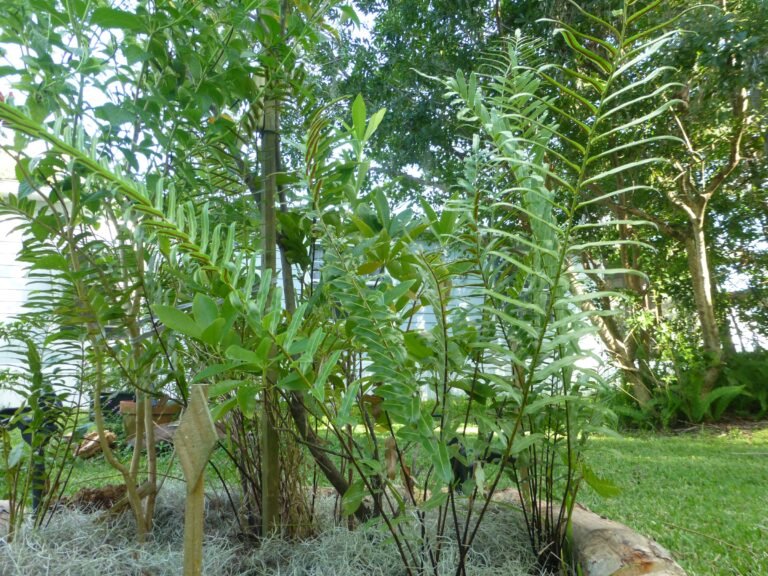
Wildlife Use
Ferns of all types provide hiding, and foraging, places for a variety of wildlife such as frogs, lizards, damsel flies, and dragonflies.
Few animals eat swamp fern except for an occasional browse by wild turkeys, rabbits and deer.
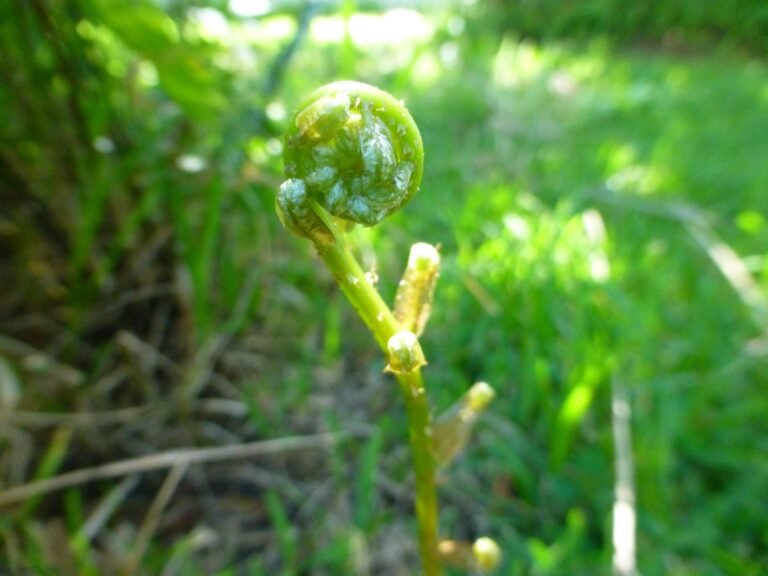
Propagation
Transplanting swamp fern may be successful if you can obtain plants with sufficient roots. Sometimes when you pull up a single frond it may have enough roots to keep it growing. In that instance I place them in a pot so I can make sure they are constantly watered until they show new growth, by sending up new fronds, and then I plant them out where I want them in my landscape.
To transplant a larger amount it is best to get the plants up with the soil intact. Going about it this way is most always successful especially if you are placing them in a similar environment.
When transplanting individuals be sure to keep them watered until new growth appears and then it should require zero maintenance if you have it planted in a moist site.
Further Reading
The United States Forest Service has a great article called Fern Structure if you’re interested in learning more about ferns. Check out –
https://www.fs.usda.gov/wildflowers/beauty/ferns/structure.shtml#:~:text=Sori%20(singular:%20sorus)%20are,indusia%20(singular:%20indusium).
The University of Florida has a great article called Natural Area Weeds: Distinguishing Native and
Non-Native “Boston Ferns” and “Sword Ferns”
(Nephrolepis spp.)
https://ufdcimages.uflib.ufl.edu/IR/00/00/41/78/00001/AG12000.pdf